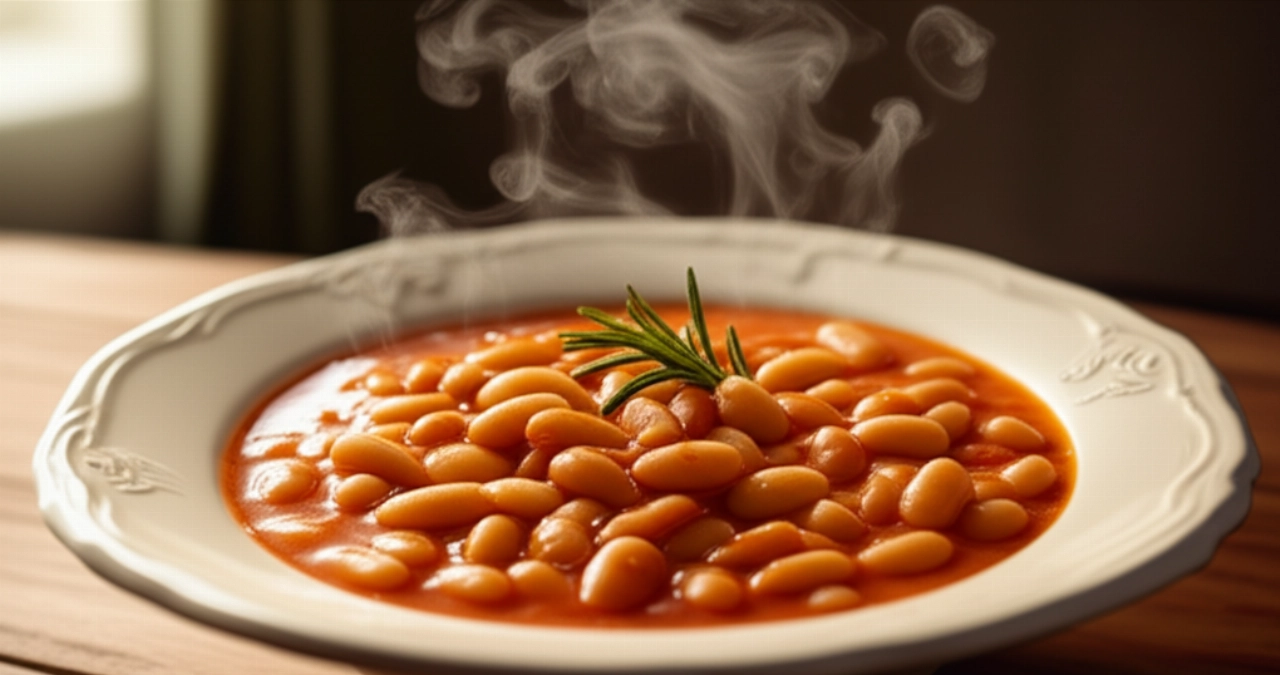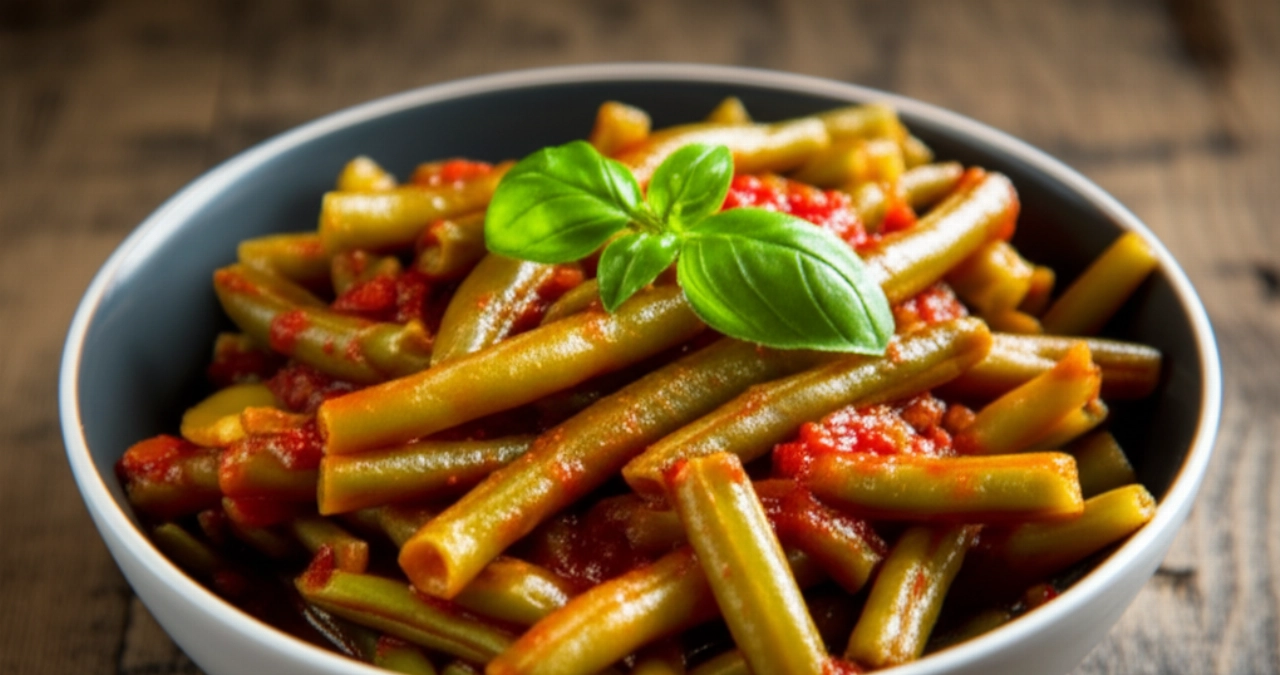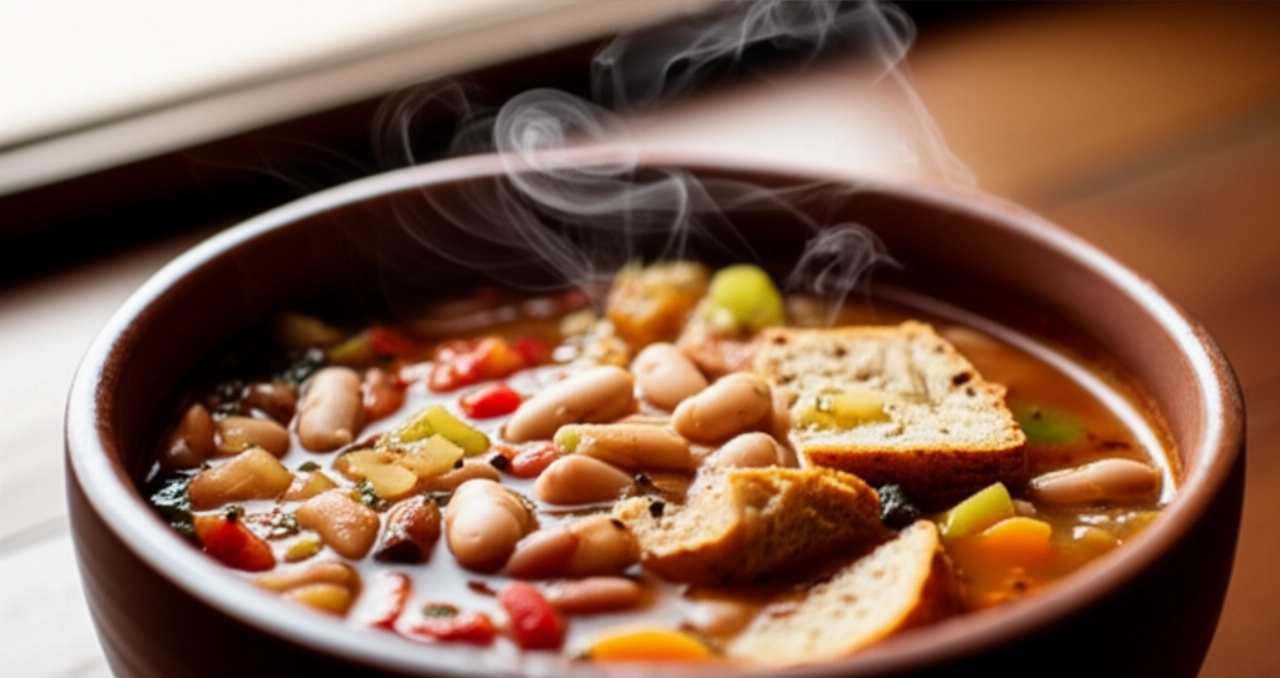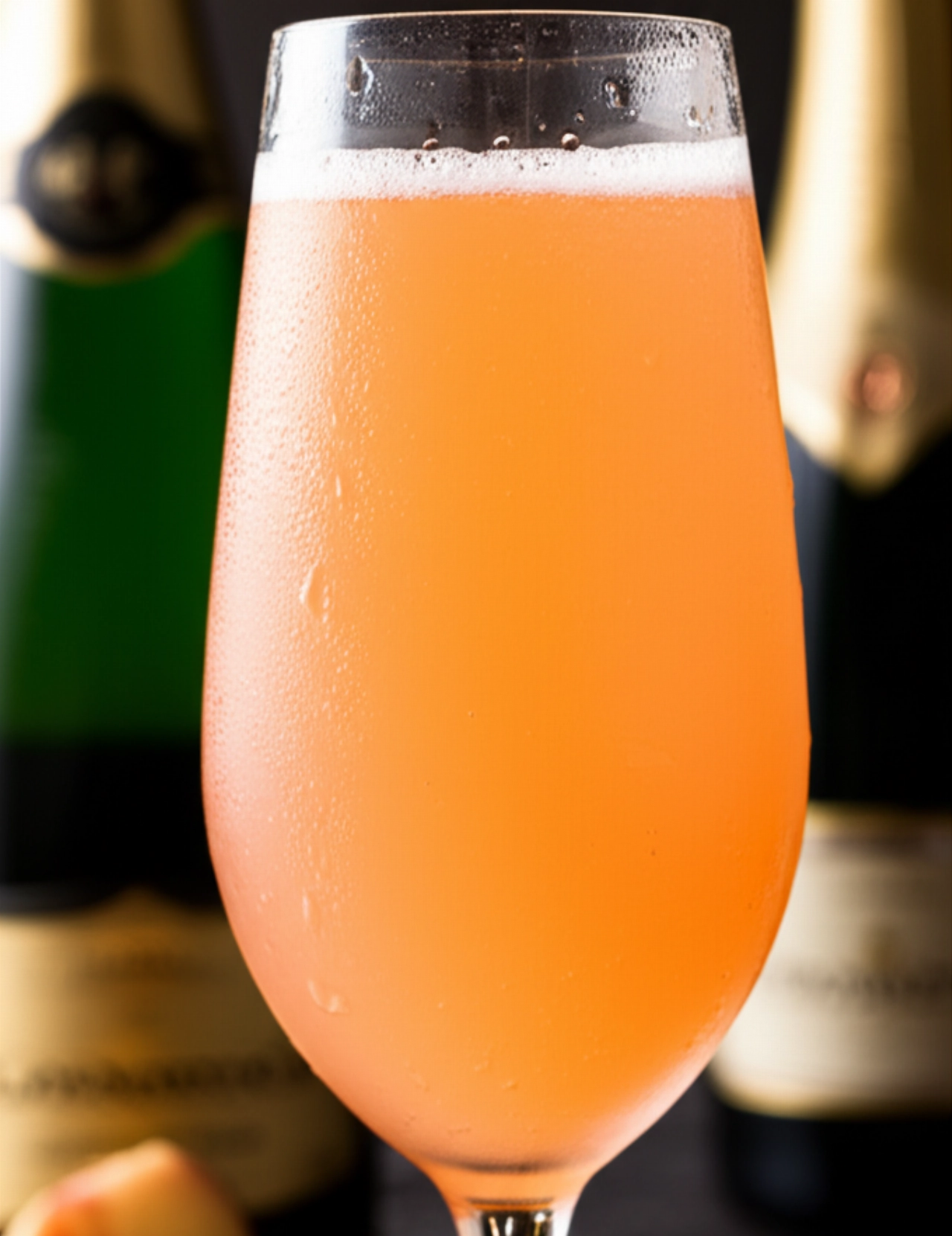Do you dream of bringing the true taste of Puglia to your table, that authentic flavor that warms your heart and reminds you of home?
Perhaps you've tried making fava beans and chicory, but the purée turned out too liquid or too thick, the chicory too bitter, or the taste wasn't what you remembered. Finding 'the right' recipe that guarantees success can seem like a challenge.
Make yourself comfortable, because today I will reveal all the secrets to preparing a Fava Bean and Chicory Purée that will make you look great. Not just a list of ingredients, but a step-by-step guide that will guarantee a dish with velvety creaminess and a perfect balance of flavors, just like your Apulian grandmother used to make it. Success is guaranteed, and your palate will thank you!
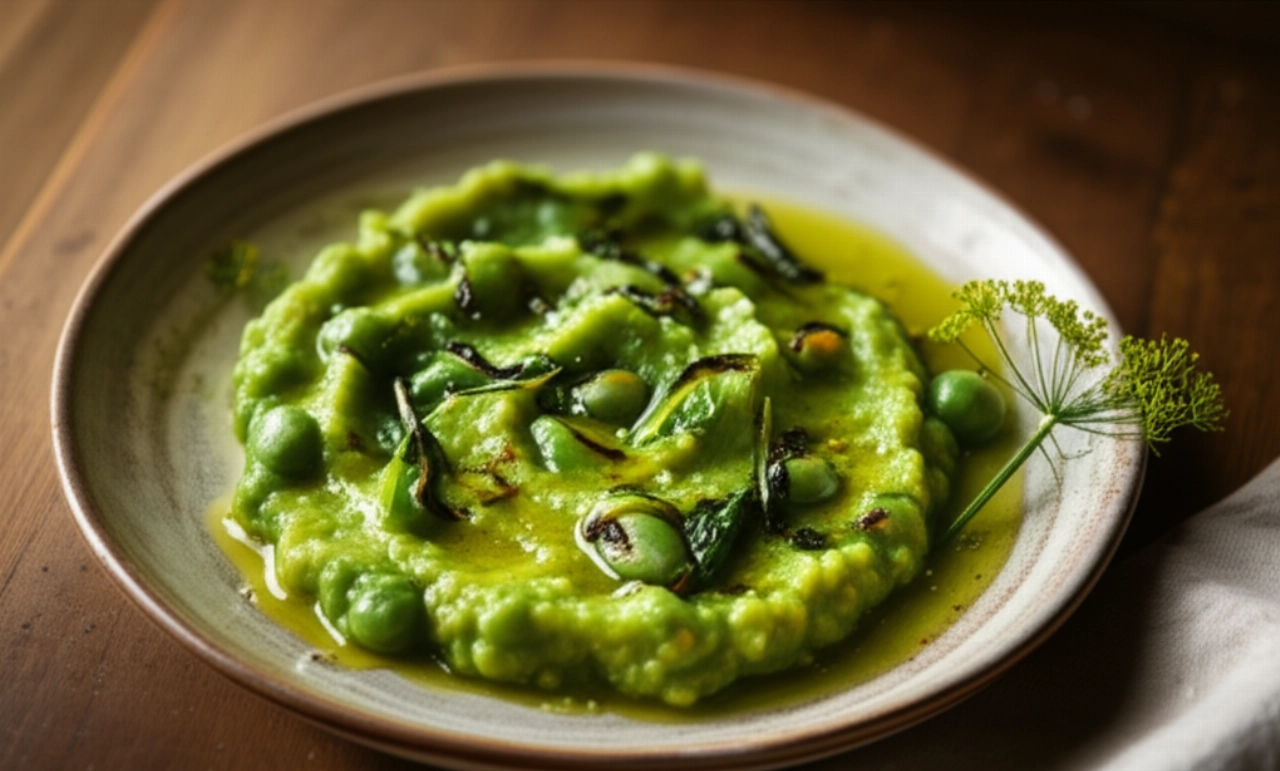
Smart Ingredients: The Choice That Makes the Difference
- Dried, shelled fava beans: They are the base of our purée. Choose excellent quality, preferably local ones. Shelled beans don't need to be peeled, saving you time and effort, and guarantee superior creaminess.
- Chicory (or wild chicory): The bitter and noble heart of the dish. If you find wild chicory, use it! Otherwise, cultivated chicory works perfectly fine. The important thing is that they are fresh and crisp. Their slight bitterness will create a divine contrast with the sweetness of the fava beans.
- Extra virgin olive oil: No compromises here! A good Apulian EVO oil, fruity and slightly spicy, is essential. It's not just a condiment; it's the soul of the dish, what binds the flavors and gives shine to the purée.
- Garlic: Just one clove, to give a delicate and enveloping aroma to the chicory, without overpowering its flavor.
- Salt: Always good quality, measured carefully. Remember you can always add more, but you can't take it away!
- Chili pepper (optional): For those who love a touch of vibrancy, a pinch of fresh or dried chili pepper can give the chicory an extra kick.
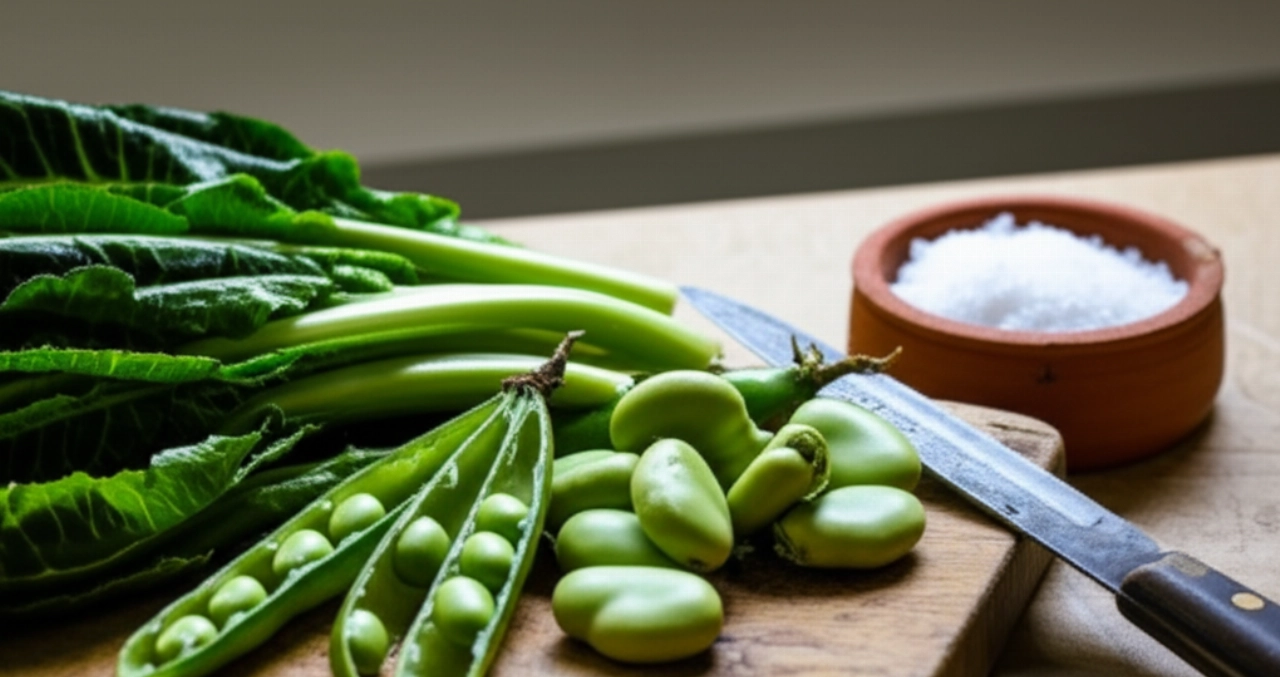
The 3 Mistakes That Make Fava Beans and Chicory Unbalanced (and How to Avoid Them)
Don't worry, it's normal to have some doubts, but with these tips, you'll avoid the most common pitfalls:
- Not soaking the fava beans enough: Dried fava beans need a long soak (at least 12 hours, changing the water a couple of times) to rehydrate properly. If you don't, cooking will take a very long time, and the purée will never become velvety. Don't rush!
- Not cooking the fava beans enough: They must be overcooked, almost falling apart. Only then can you achieve that melt-in-your-mouth creaminess. If they still feel slightly 'hard,' continue cooking. Patience is key.
- Not balancing the bitterness of the chicory: Chicory is naturally bitter, and that's its beauty! But excessive bitterness can ruin the dish. The secret lies in cooking it well and, if necessary, doing a double boil or adding a pinch of sugar when sautéing it, to mellow it without eliminating its character.
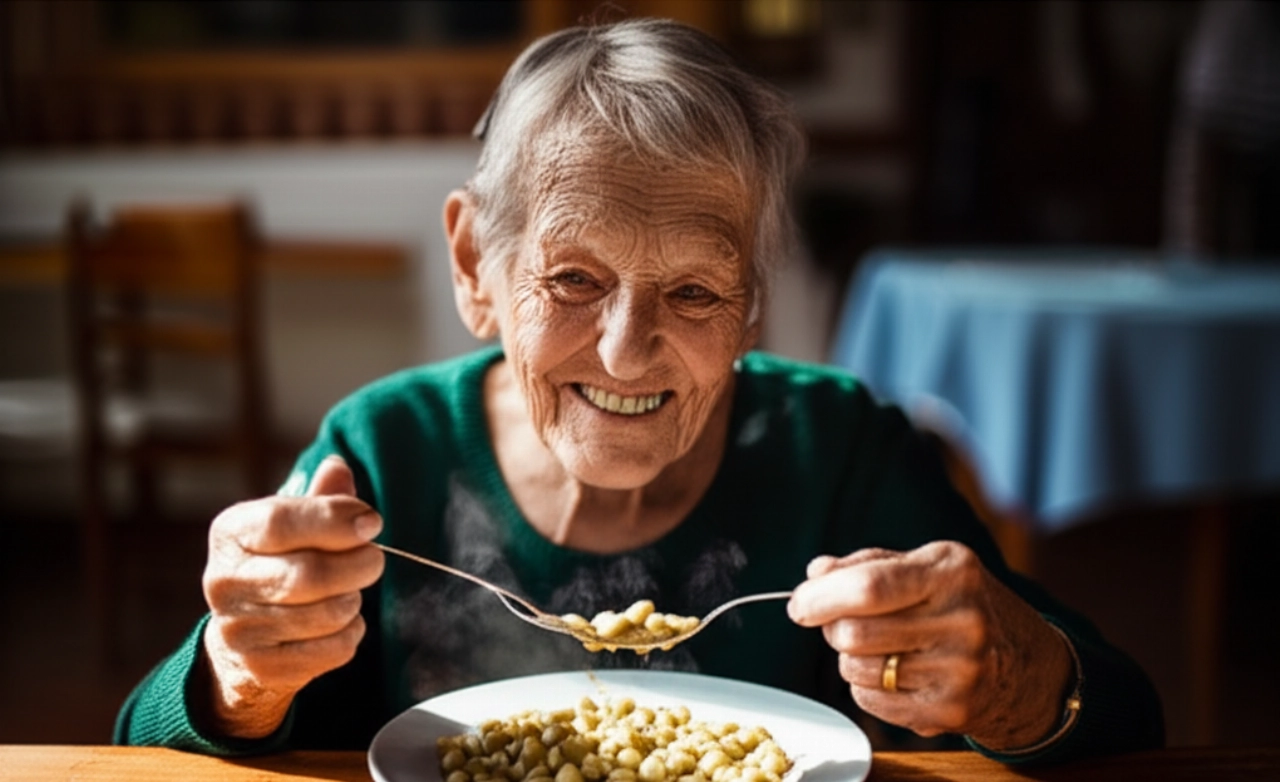
Grandma's Secret: The Magic Touch for an Infallible Purée
My grandmother, when preparing fava beans and chicory, had a trick few people know. After cooking the fava beans, before blending them, she would always add a tablespoon of the chicory cooking water. This small gesture not only helped achieve the perfect creaminess but also infused the purée with a subtle hint of the vegetables, further binding the two elements. Try it, and you'll taste the difference!
Let's Prepare Fava Beans and Chicory Together: The Step-by-Step Guide
Preparing this dish is a ritual, a dance of flavors and aromas. Follow me carefully, and success will be assured.
1. Soaking the Fava Beans:
- Place the dried, shelled fava beans in a large bowl.
- Cover them with plenty of cold water (at least double their volume).
- Let them soak for at least 12 hours, or even better, overnight.
- Change the water at least once or twice during soaking. This helps make them more digestible.
2. Cooking the Fava Beans:
- Drain the soaked fava beans and rinse them well under running water.
- Transfer them to a large, heavy-bottomed pot.
- Cover them with clean cold water (about 3-4 fingers above the level of the fava beans).
- Bring to a boil over medium-high heat, then reduce the flame to minimum.
- Remove any foam that forms on the surface with a slotted spoon.
- Cook over low heat, with the lid slightly ajar, for about 1 and a half – 2 hours, or until the fava beans are completely broken down and tender. If the water dries out too much, add some hot water.
- At the end of cooking, salt them generously.
3. Preparing the Chicory:
- Clean the chicory by removing the tougher outer leaves and the earthy base.
- Wash them very well under running water, even multiple times, to remove any soil residue.
- Bring plenty of salted water to a boil in a large pot.
- Plunge the chicory and let it cook for about 10-15 minutes, or until tender.
- Drain it well, reserving a ladleful of the cooking water.
- Gently squeeze it to remove excess water.
4. Creaming the Purée:
- Drain the cooked fava beans, reserving some of their cooking water.
- Transfer them to an immersion blender or a food mill.
- Blend until you get a smooth and velvety purée. If it's too thick, gradually add some of the fava bean cooking water (or grandma's secret: a tablespoon of the chicory water!).
- Taste and adjust salt.
- Add a generous drizzle of extra virgin olive oil and cream vigorously with a wooden spoon to make it even creamier and shinier.
5. Sautéing the Chicory:
- In a large pan, heat a generous drizzle of extra virgin olive oil with a clove of garlic (and chili pepper, if using).
- When the garlic is golden, add the drained and squeezed chicory.
- Sauté over high heat for a few minutes, stirring, so they get well flavored.
- Taste and adjust salt. If you find them too bitter, you can add a pinch of sugar.
6. Plating and Serving:
- Arrange the fava bean purée in the center of the plate, creating a soft "bed."
- Place the sautéed chicory on top of or next to the purée.
- Finish with a generous drizzle of raw extra virgin olive oil. This is essential for flavor and shine!
- Serve immediately, perhaps accompanied by homemade bread croutons.
Tips and Frequently Asked Questions about Fava Beans and Chicory
- Can I use fresh fava beans? Of course! If you're lucky enough to find fresh fava beans, soaking time is not necessary, and cooking will be shorter. The flavor will be even more delicate.
- How can I make the purée even creamier? Besides grandma's trick, you can add a tablespoon of raw EVO oil while blending the fava beans, or a small piece of boiled potato during the fava bean cooking.
- Can I prepare fava beans and chicory in advance? Absolutely! The fava bean purée keeps well in the refrigerator for 2-3 days in an airtight container. The sautéed chicory also. Gently reheat before serving, adding a drizzle of oil.
- How can I mellow the chicory if it's too bitter? After boiling them, you can do a second boil in clean water. Or, when sautéing them in the pan, add a pinch of sugar or a teaspoon of balsamic vinegar to reduce the bitterness.
- What are the best chicories to use? Wild chicories (like Catalogna chicory or Cimata chicory) are the most authentic and flavorful. Alternatively, field chicory or even escarole can be a good substitute.
There you have it! Now you no longer have just a recipe, but all the secrets to bringing a dish to your table that tastes of home, tradition, and love. A true masterpiece of Apulian cuisine, simple yet rich in history and flavor.
Don't be afraid to experiment. Cooking is an act of creativity and generosity. But start from this solid and infallible base, and you'll see that applause will not be lacking. Every bite will be a journey to Puglia!
Have you tried our Fava Beans and Chicory recipe? We're very curious to see your masterpiece! Leave a comment below, tell us how it went, or share a photo on Instagram by tagging @CercaRicette.it. If you loved this humble but flavorful dish, you can't miss our recipe for Orecchiette with Turnip Greens or for a perfect side dish like Crispy Roasted Potatoes. Keep cooking with love, with Cerca Ricette!


